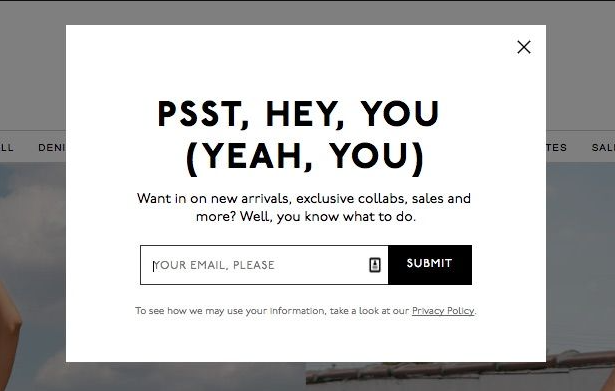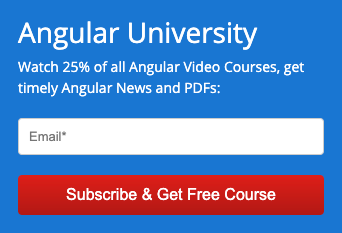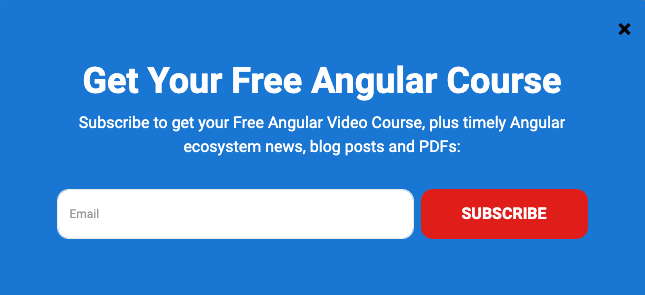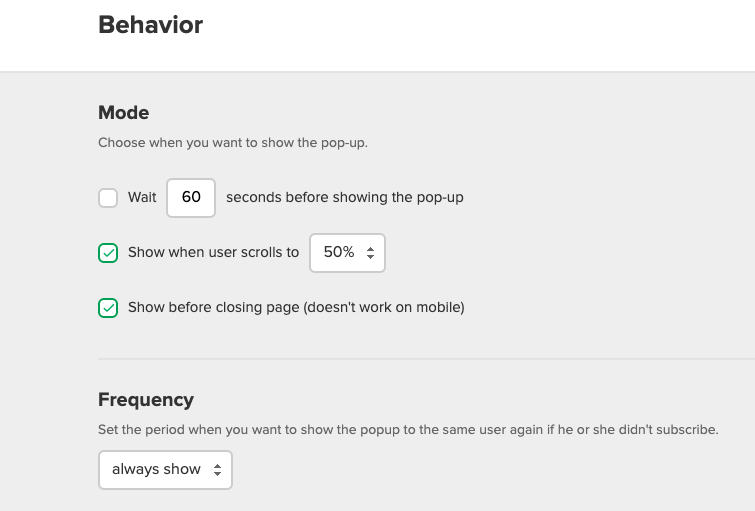What Is The Best Lead Magnet For Your Online Courses?
 Platform Review
Platform Review

This is a detailed guide aimed at online course creators, teaching how to create a high-converting lead magnet for your online courses.
If you are a course creator trying to make a living selling online courses, then you will have to learn a way to find and get the attention of your paying students.
Someone might be interested in what you are teaching, but they might not be sure yet if they are interested in paying for a course right now.
These potential future students are known in common marketing terms as leads, meaning that they first want to learn more about you, before purchasing anything.
To find student leads and start the process of convincing them to become your paying students, you need something to attract their attention, and this is known as a lead magnet. You will find all sorts of advice on what makes a good lead magnet.
What you don't want to do, as a course creator, is take some of that generic marketing advice regarding lead magnets and start applying it blindly, without any context, as most of that generic advice does not apply (in my experience as a course creator) to an online course business.
So what is the best lead magnet for an online course?
The best lead magnet for an online course is a free video course, aimed at beginners that are just learning your course topic.
Students interested in your free course are also very likely to be interested in a premium and more in-depth course, so that is why a free beginner's course works so well as a lead magnet.
You don't have to create a separate course for this, you can reuse parts of your existing courses.
In this guide, we will you give all the specific details on how to set up your lead magnet for your online course properly.
If you are still looking for generic email marketing advice, I can also recommend a great resource here - The Backlinko Email Marketing: The Definitive Guide
But I think that you, as an online course creator will need something a lot more specific.
In this post, you will get specific advice aimed at online course creators, based on my personal first-hand experience as a course creator myself, and after quite some trial and error - I'll tell you exactly what worked for me.
As a bonus, I'll share with you a tip that I learned directly from Neil Patel as well, how cool is that 😃?
I'll give you also all the numbers and concrete examples that you need. So without further ado, let's get started!
So What Are The Best Lead Magnets for an Online Course Business?
The best lead magnet that you can create to attract students to your online courses is by far an online course.
That's right, the best way to attract students to a course on a given topic is a free course on that same topic! That makes sense, right?
It works like a charm, and no other lead magnet that you can come up with will ever beat that (I'll show you the stats). I will teach exactly how to do it step-by-step, and it does not take that much work unlike what it might sound like.
Other typical lead magnets that you see recommended simply don't perform as well as a free online course, at least in the case of online course business, and it's not even close.
For example, how many random popups have you closed today already proposing you some sort of downloadable PDF, a Case Study, a Cheat Sheet, and god knows what else?
Like all of us, by now, you know better than to give your email for another useless PDF and get a ton of spam in return for the next few weeks.
But if you are trying to learn about Excel to update that monthly report at work that your boss asked you to fix, and someone proposes you a free Excel for beginners course, what will you do? You will sign up right there on the spot!
Remember that an online course business is a business like any other. Even though you are a teacher, you are also an entrepreneur and your business needs leads that might become potential paying customers in the future, just like any other business.
The amount of valid leads that you can generate, and the ability to convert them to paying students over time is going to be a determining factor in the success of your course creation adventure, almost as much as the quality of the courses themselves I'm afraid.
So if you want to give your online course business the best chance to succeed, try the following 3 steps to create the most effective lead magnet that you can have.
Step 1 - Create a Free Course (but don't invest a lot of time)
The first step to creating lead magnets for online lessons is to create a free course, that you will give away in exchange for the student email and a chance to build a long-lasting relationship with them.
But you don't have to create a complete course from scratch with many hours of content to do this.
What you can do is, you can produce a mini-course of 2 to 3 hours, but not more on the topic, and you can target the beginner segment, if that applies in your niche.
Beginners make great leads, because they are just at the start of their learning journey, and they are likely willing to learn a lot more about your topic.
If you don't want to create a mini-course from scratch, what you can do instead is to repurpose some existing content, by filming a new introduction and repackaging it as your lead magnet course.
In my case, I've taken several lessons from one of my in-depth courses, and I've repackaged it.
I've taken around 2 hours of content from the main course, I've filmed a new introduction and I've repurposed that content as a beginner's course, which is free and works as a lead magnet.
Notice that the user interface that you see in those simple course pages is not the OnlineCourseHost.com platform, that is an ancient website that I built a long time ago, our platform looks a lot better.
Anyway, this is just an example, as you can see it's very simple to repurpose one of your existing paid courses and extract a mini-course out of it.
You might want to produce your long-form course already thinking of how you are going to extract a lead magnet out of it. You can for example split it up into sections, and turn the first section into your lead magnet.
Next, what you want to do is to add a conclusion video at the end of your lead magnet course, talking about all the other more advanced topics that are still left to learn.
Then you can add a link to your premium material, and many of the students that took your free course to the end will then take the next step and buy your premium courses, especially if you mention that the free course is a subsection of a paid course.
Even if most students won't take the full free course, they will at least give it a go. And those 10 to 20 minutes that they will spend learning directly from you will be crucial to convince them that you are the teacher that they are looking for.
So make sure to put your most compelling and well-produced material at the beginning of your free course, and not at the end.
As you can see, this didn't take a lot of work: you have repurposed existing material or created a couple of hours of beginner content, and you have added an intro and a conclusion.
Now that you have your free course ready, what's next?

Step 2 - Install an Email Popup on your Website
The goal of the lead magnet course is to give something away for free in exchange for the student's email, so that you can build your email list over time, present yourself to the student and show them your teaching skills.
By far the most effective way to ask for an email that still works today is to install a popup on your website.
Now, I know what you are thinking: I hate email popups! Right?
But the truth is that not only do they work extremely well, but they also work much better than embedded email forms.
For example, on my blog posts, I add an embedded email form proposing my beginner's course, and I do get a ton of traffic on my website (387k page views in the last 30 days as I'm writing this post).
Here is a picture of the embedded email form:

I created this embedded course using the Mailerlite email software, which I recommend (I don't have a commercial relationship with them other than being their client).
This email software has all the features that you need as an online course creator, plus it's a fraction of the price of most other email software with similar features (it was about half the price of Mailchimp when I switched to Mailerlite a few years ago).
This embedded form, present in all my blog posts converts quite poorly:

As you can see, from 1000 page views, I only get 3 emails but this might be because this form is at the end of each blog post, and a lot of readers don't get to the bottom of the page.
An embedded form in a side menu that scrolls together with the content and is always visible, or a top email bar like Hello Bar will convert a lot better (I have no relationship with them either):

You can try to offer your lead magnet course using a top announcement bar, but all of these embedded forms simply won't work as well as an email popup.
For example, here is what my full-screen email popup looks like:

And here are the statistics of this particular email popup:

As you can see, this popup converts a lot better than an embedded email form, we are talking about almost 14 times better!
This is a new version of the popup recently created, that converts especially well. Notice some of the elements in the popup:
- the simple design, it's not fancy at all
- the brand colors
- the red "Subscribe" button
- The title: "Get Your Free Course"
And here is one of the previous versions of the popup, that converted less well, but still much better than an embedded form:

How To Do an Email Popup Correctly When Creating Lead Magnets For Your Online Course
An email popup, if done correctly, provides an OK user experience, the key is to not interrupt the student immediately when they are going through your content, like for example when they have just started reading the page.
If the popup opens all the time and especially after just a few seconds, it's just too much.
Also, a popup is known in SEO or Search Engine Optimization terms as an interstitial element, which is a fancy term that means that it's blocking the page's main content and is not giving a good user experience.
Do you remember going to a website that is constantly showing popups? That type of user experience might get your website penalized because the website is hiding the main content from the user.
So how do you deal with this? The key is to set the behavior of the popup to only open if the user scrolls to at least 50% of the page.
So only interested users that have read through a large part of the page will be shown the lead magnet course, after giving them some time to study your page.
The interruption is of course slightly awkward, but if the course offered in the popup is compelling, the readers won't mind it, and if they are not interested they will simply close the popup and keep reading.
I knew this works well from experience, but I was still curious to know if popups are still recommended. So I asked around and surprisingly I got an authoritative answer.
What Does Neil Patel Think Of Popups? (I've asked him)
I was curious to know what works in terms of popup behavior and I've asked a question in one of the videos of a very well-known marketer called Neil Patel, that you must have found already if you are interested in these topics, and here is what I asked him:
Popups convert a lot better than embedded forms though. You can get over 1% conversion on a good popup, and nowhere near that otherwise. What about delayed popups, do they hurt SEO? For example, waiting 20 seconds before showing the popup? Does anyone have any experience with the SEO impact of that?
And here is the reply from Neil Patel himself:
I totally think that both are worth testing out, friend :) Every audience is different and is going to react differently. I've tested with delayed popups but have had better results with exit intent popups.
And here is the comment on the YouTube video where he replied to me:

So there you have it, straight from the horse's mouth, from a very experienced marketer that is specialized in these things!
Following Neil's advice, besides showing the popup after the user has scrolled through half the page, you also want to make sure to show the popup when the user is trying to close the browser window.
This interruption will not come across as that annoying because the user has already finished reading the page.
Last but not least, what if the user does not submit his email, when will you show the popup again to the same user?
If you are just starting, I think that you should show it at every opportunity (50% scrolling plus exit intent), but if you are already an established creator you might want to reduce that to once a day.
Here are some sample settings for the popup behavior:

With these behavior settings, you avoid annoying the user, while still offering him at certain moments a free course that many of them will be glad to take.
And now that you have the student's email, all you have to do is to send them your free course.
Step 3 - Create a Welcome Email for Your Email Sequence
Creating a free course and sending it to your students is an amazing lead magnet for your online course business.
However, bear in mind that when you are sending the free courses to your students, you want to take that unique opportunity where for a brief moment you have their attention, and you want to make the most out of that moment, as that might not ever happen again.
When the student provides their email via the popup or an embedded email form, you want to do a couple of things:
- You want to add the student to your email list
- You want to trigger a sequence of welcome emails, and send the student more content
- The first email of the welcome sequence will contain, of course, the lead magnet free course that they have signed up for.
If your free course sounded interesting to the student, they will open your email at a very high rate.
You want to make sure that the subject of the email includes the words "Your Course Inside" in the email subject, and your email will do very well.
As an example, here are the statistics of my recently reviewed welcome email:

About these lead magnet statistics
As you can see, the 75.7% open rate is almost 4 times the industry average of 20%, and the 31.7% click-through rate is almost 16 times higher than the industry average of 2%!
This tells us that people that are already looking to learn online via video will see a free video course as something very desirable, and they will willingly subscribe to your email list to get access to your free course.
Conclusions
So, how do you choose a lead magnet for your online course?
As a course creator, using a free course as a lead magnet works extremely well in attracting students to your website and converting their visits to sales.
As you saw in the statistics presented in this post, if you want to create the best possible lead magnet for your online course business, nothing can beat a free course!
Email popups can indeed be annoying, but if you offer your students a very valuable free course that they want, plus you only show the popup at moments where they won't be so surprised (like when exiting the page), then you will still provide to the student a good experience while giving yourself the best chance to grow your online course business.
Remember, your free course is free, so I don't think it's unethical to try to propose it to as many people as possible that could benefit from it.
The key is to make sure that your free course is jam-packed with value and super useful, and not a shallow product that was quickly put together just to grab the students' email.
That is the most important thing that I would like to remember from this post, your free course should be awesome, just like your premium courses, and put together with the same care for the student's experience.
From there, the student now knows who you are, they have provided their email, they have taken your free course, they have enjoyed it and they are now ready to learn more.
If you want to learn more about how to write emails effectively as an online course creator, you can check the related post-Ethical Email Marketing For Online Course Creators.
I hope this helped, if you have any questions about any of this, post them in the comment section below and I'll get back to you, you can also post them in our Course Creator Facebook Community if you prefer.
To get notified when I release new content here in the Academy, you can subscribe here to my weekly newsletter:
Also, you can find all my in-depth guides with everything that you need to know about course creation on the Course Creator Academy Home Page.
Check out also any other posts that you might be interested in on the blog home page.
That's all I got for today, see you soon and meanwhile, I wish you Happy Teaching!
Vasco Cavalheiro
OnlineCourseHost.com Founder & Online Course Creator
LinkedIn Facebook Page Facebook Group Twitter
You are welcome to ask me any questions in the comments below: 👇👇👇👇








 Start Here
Start Here Course Creation Journey Step by Step
Course Creation Journey Step by Step  Course Creation Software Reviews
Course Creation Software Reviews Online Course Marketing
Online Course Marketing Course Creation Tips & Tricks
Course Creation Tips & Tricks Course Equipment
Course Equipment Online Course Marketplaces
Online Course Marketplaces Revenue Reports
Revenue Reports Best Practices
Best Practices Frequently Asked Questions
Frequently Asked Questions Platform Reviews
Platform Reviews